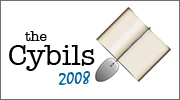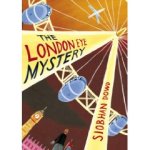Happy Friday one and all! Today Lisa Greenwald is hanging out at Shelf Elf, sharing her thoughts about writing, favourite things and life as a debut author. My Life in Pink and Green is out right now, this very moment, in bookstores near you. I loved it (read my review) and so do lots of other folks, including Kirkus (starred) and Publishers Weekly and Indiebound, which just named Lisa’s novel as a Top 10 Pick for Spring 2009. I’m convinced Lisa’s book is bound to be a hit with all sorts of happy MG readers. Welcome Lisa!
What inspires you? (People, Places, Art, Food, Ideas…)
I think I am most inspired by people. I’ll see a mother and daughter on the subway and I’ll want to know their story. I’ll see a group of friends chatting over coffee and I’ll be so intrigued by what they’re discussing. I love to eavesdrop; I hope that doesn’t come off as creepy.
Describe your path to publication.
My first job out of college was in the BFYR editorial department at Farrar Straus and Giroux. I loved it and loved learning about children’s books. But then I realized that I wanted to be one of the people writing them! So, I started the MFA program in Writing for Children at The New School in the fall of 2004 and graduated in the spring of 2006. However, I didn’t sell MY LIFE IN PINK & GREEN until November of 2007. That probably doesn’t seem like very long, but it felt long to me. During that time I wrote many drafts of a different novel. When I signed with Alyssa Eisner Henkin, we worked on MY LIFE IN PINK & GREEN together and things have been going smoothly ever since. I owe so much to Alyssa; she is a fabulous agent.
Do you have any writing rituals?
I actually really enjoy writing in random spots like bookstores, department stores, the Long Island Railroad and coffee shops. I like to have noise around me, but not annoying noises like tapping or humming or a buzzing refrigerator or obnoxiously loud music. I like to have quiet conversations and quite music around me as I write.
I know that in addition to you writing, you also work in the library at The Birch Wathen Lenox School in Manhattan. How does that work affect your writing?
I love working at BWL. It’s so much fun to talk to the kids and help them find great books. I also think it’s helpful in terms of my writing because I can see first hand how kids act at lunch or during assemblies or in the hallway. I do remember middle school very vividly but it’s nice to see how kids are today.
What books are especially hot titles right now at your school’s library?
Of course the Twilight books are popular. TTYLand other titles by Lauren Myracle don’t seem to stay on the shelves. The students are also big fans of Caroline Hickey; she came to do an author visit at BWL last year.
How did the idea for My Life in Pink and Green come to you? Did it happen in a moment, or did it sneak up on you over time?
It actually began as a tiny idea at my brother’s college graduation from the University of Pittsburgh in the spring of 2006. I saw a little girl with who I’m guessing was her grandfather in the row in front of us and I got an idea about a girl and her grandfather and a family business. However, the grandfather in the story became a grandmother and the story evolved from there. Continue reading













